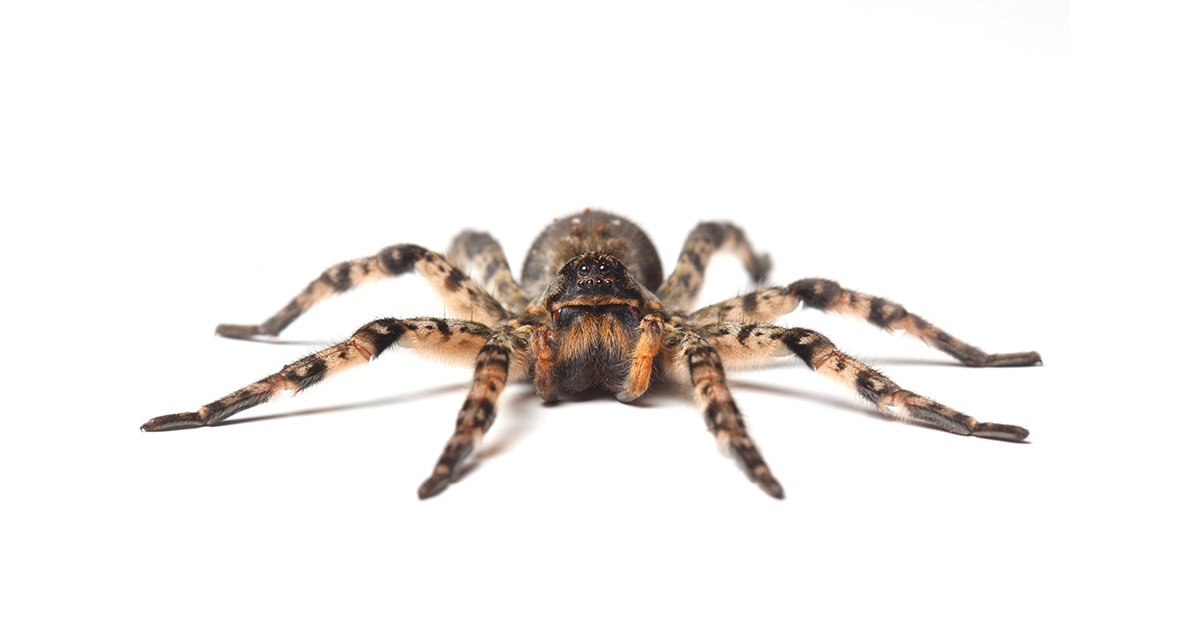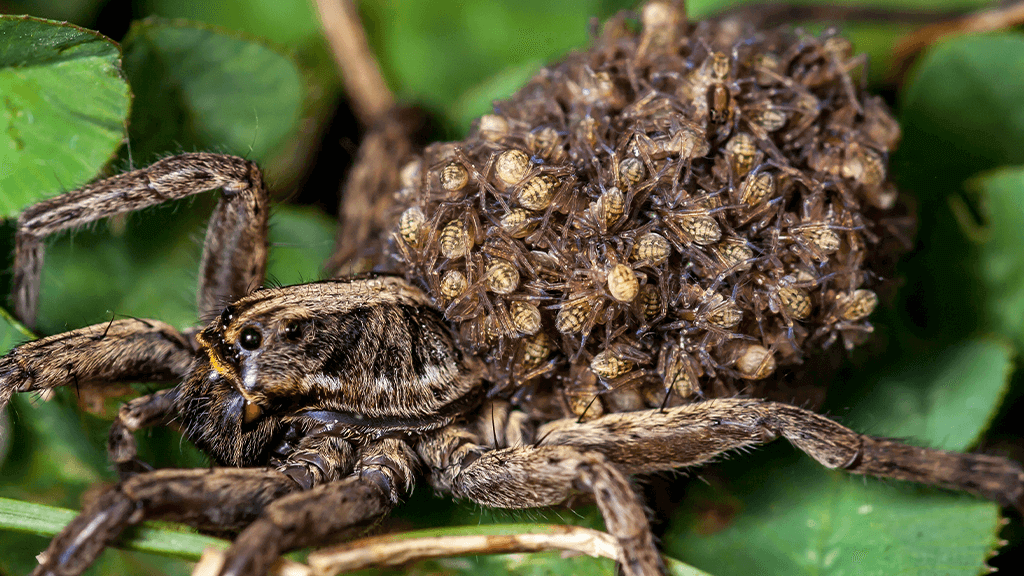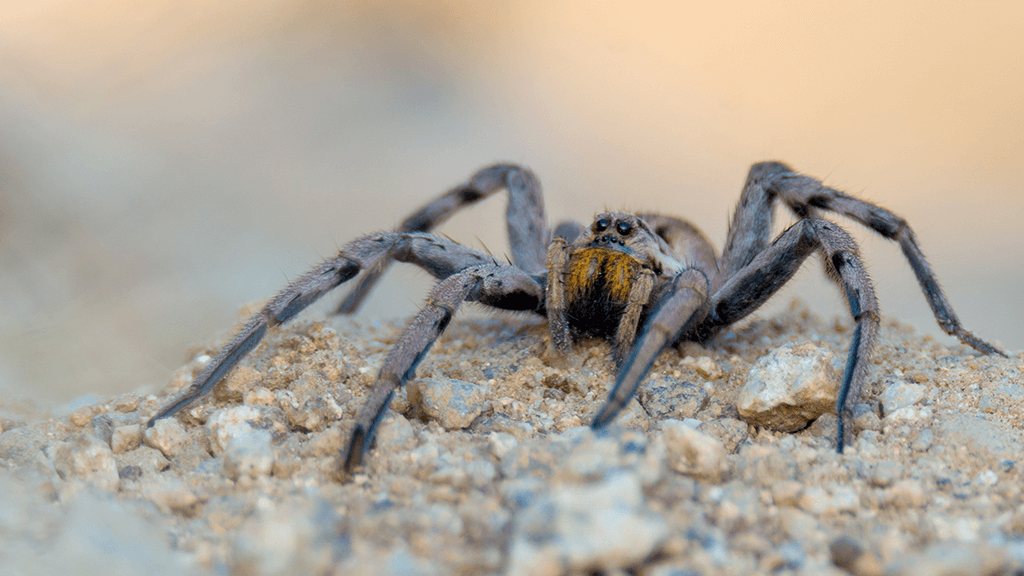How to Identify and Get Rid of Wolf Spiders

It’s no surprise that spiders are among the top three most common phobias nationwide, and wolf spiders are clear proof of why—spotting a large, long-legged spider in your home can send even the bravest of us running. Knowing how to quickly spot and contain these spiders will protect you and your family not only from a bothersome spider invasion, but also from potential spider bites, giving you peace of mind and a deserved sense of security.
HOW TO IDENTIFY A WOLF SPIDER
The wolf spider’s name is no coincidence—these arachnids were once thought to have hunted in packs, not unlike their canine namesake. Though they actually hunt alone, these brown, hairy spiders do exhibit other predatory behavior. Instead of spinning webs to catch their prey, they remain low to the ground, dashing rapidly across the floor to attack their prey. Though they move swiftly and stealthily, they are large enough to be spotted mid-pursuit by unsuspecting homeowners. Wolf spiders’ size can range from half an inch to two inches long, making them easy to mistake for tarantulas. An encounter with wolf spiders of all sizes happens most often at floor-level when the spider is mid-hunt, making most run-ins with these creepy crawlers quick and unexpected.

A female wolf spider will lay her eggs and keep them with her, hauling a large egg sac on her back until they’re ready to hatch. These egg sacs make the wolf spider appear even larger and more intimidating. After hatching, baby wolf spiders typically remain inside the sac, riding on their mother’s back for a few days before making their way into the world.
LOCATING THE SOURCE
If you live in an area inhabited by other insects, it is nearly guaranteed that wolf spiders are also in your midst. It follows, then, that wolf spiders are among the most common types of spiders across the country. Their notable presence is due largely to their ability to easily adapt to varied climates and conditions. Wolf spiders’ brown bodies enable them to conceal themselves in obscure hiding spots, most usually in the loose refuse, rocks, and debris commonly found outside in your yard. Wolf spiders are drawn to areas primarily by the potential for plenty of meal options. Most run-ins between people and wolf spiders happen largely by chance.

Wolf spiders are predominantly motivated by chances to pounce on their next meal. If a wolf spider has made its way indoors, it’s likely they simply followed potential prey through an unsealed crack, door left ajar, or opened window. Wolf spiders have little interest in taking up residence inside your home unless there’s food to be had.
If you’ve crossed paths with numerous wolf spiders on your floors, it’s reasonable to assume other insects are lurking about as well. Insects such as ants, cockroaches, houseflies, grasshoppers, and other small bugs attract eager wolf spiders, and multiple spider sightings are often indicative of a bigger insect problem that is drawing the wolf spiders inside.
HOW TO GET RID OF WOLF SPIDERS
Before attempting to contain a wolf spider population, homeowners should inform themselves of the risks of improper methods. While wolf spiders are predators, they will not interact with people unless provoked. Smashing or trying to squash an intruding wolf spider puts you and your family at an increased risk for unpleasant bites from frightened spiders. But fear not: wolf-spider bites won’t cause fatal harm, but these spiders do carry a mild venom which causes an uncomfortable, often allergic reaction from their bites.
Extra care must be taken with female wolf spiders, as an attempt to crush a mother spider may accidentally release hitchhiking baby hatchlings, scattering dozens of wolf spiders and complicating what could have been just a minor spider problem. If a wolf spider crosses your path and you want to get rid of it on sight, carefully catch it with a small container or cup and set it free outdoors.

The first step in properly and safely evicting wolf spiders can be accomplished through a little extra elbow grease when doing day-to-day household chores. Because wolf spiders are attracted by other insects, homeowners should first address any spills, crumbs, unsealed cracks, or other temptations that draw in small bugs and other insects. A few extra passes with a vacuum, mop, or broom could send potential prey searching for food outside where they belong. Outdoors, take some time to examine your home’s perimeter for unsealed cracks or loose debris that can act as pathways or hiding spots for these tricky spiders.

If an examination of your home reveals loose caulking, old weather stripping, or unsealed holes, a quick trip to your neighborhood home and garden store might be in order. Patching any small entry points that allow insects—and the wolf spiders that follow them—passage indoors can easily knock out a bug problem. To expedite the elimination, add basic contact kills and insect glue traps into your cart while you’re at it. These easy-to-use products create a major roadblock on the pathways these insects and spiders take to travel indoors.
ENJOYING A SPIDER-FREE HOME
Wolf spiders follow potential food sources. Following these steps to reduce the presence of other creepy crawlies should swiftly stamp out an invasion. If these predatory spiders linger in your home, give us a call to talk with a pest control professional about additional methods you can use to eliminate them.

